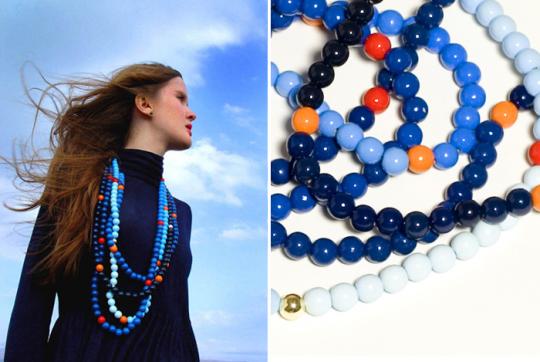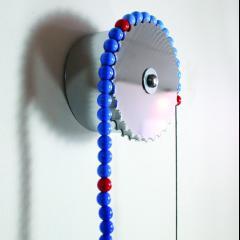Clock
Thorunn Arnadottir
Each bead in the necklace is 5 minutes. The whole necklace is one solar day. The orange and red ones represent the whole hours. As the wheel turns, one bead falls off and drops down the string every 5 minutes. To tell the time you count the beads from either the silver bead (midnight) or the golden bead (noon) to the last bead that fell off the wheel.
Time is ticking every day regardless of what we are doing. Either we are racing against time or waiting impatiently for it to pass by. We slice it into units: Hours, minutes and seconds. We construct a precise, inflexible system, which acts as the base of a complicated community that relies on everything being planned down to the second, be it transport systems or business.
Many tribes in Africa are totally unaware of this system. Time, as they experience it, is measured in events in the life of a person. For example, one might say that something happened *shortly after the marriage of their son* or that they will meet *after dinner*. Hardly anyone is irritated about having to wait. They don´t feel they are missing anything, since there is no ticking clock reminding them of time being "lost". The African time is more emotional than the western time. It is a part of the individual, not independent of him as in the western world.
You can take the necklace off the wheel whenever you wish to "stop time". Wear it proudly around your neck as a statement that time is part of you; that you are in control of your own minutes. [2007]
www.thorunndesign.com

Clock by Thorunn Arnadottir























